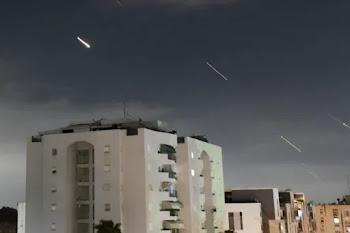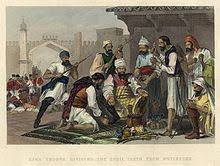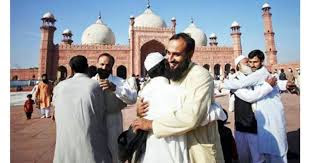Donald Trump's journey into politics is as intriguing as it is polarizing, marked by his unorthodox style, business acumen, and controversial statements. Born into a wealthy family in 1946, Trump initially made his mark as a real estate mogul, building an empire of hotels, casinos, and luxury properties. His flamboyant persona and success in the business world garnered him fame and recognition long before his foray into politics.
Trump's political aspirations took shape in the 1980s when he flirted with the idea of running for office, albeit without pursuing any concrete campaigns. It wasn't until 2015 that he officially entered the political arena, announcing his candidacy for the presidency as a Republican candidate. His campaign, characterized by bold promises, populist rhetoric, and a focus on issues like immigration and trade, struck a chord with many Americans disillusioned with traditional politics.
Despite facing skepticism and opposition from within his own party, Trump's unconventional campaign gained momentum, fueled by his strong presence in the media and his ability to connect with disaffected voters. His blunt style, unfiltered speeches, and mastery of social media platforms like Twitter set him apart from traditional politicians and resonated with a segment of the electorate seeking change.
In a stunning upset, Trump clinched the Republican nomination and went on to win the 2016 presidential election against Democratic candidate Hillary Clinton. His victory marked a seismic shift in American politics, ushering in an era of populist fervor and challenging established norms and institutions.
As president, Trump's tenure was marked by a mix of achievements, controversies, and divisiveness. His administration implemented significant tax cuts, rolled back regulations, and prioritized conservative judicial appointments. However, his policies on immigration, healthcare, climate change, and foreign relations sparked intense debate and criticism from opponents.
Trump Presidency:
Foreign Policy:
Donald Trump's approach to foreign relations during his presidency was marked by a strong emphasis on reshaping trade agreements, challenging international alliances, and adopting a confrontational stance toward perceived unfair practices by other countries.
1. **Trade Policies and Tariffs:**
- Trump campaigned on a platform of prioritizing American interests in global trade and addressing what he saw as unfair trade practices. This led to the imposition of tariffs on imports of various goods, particularly targeting China, South Korea, and U.S. allies in the steel and aluminum industries.
- His "America First" approach included threats of tariffs on countries engaging in what he deemed unfair trade practices, criticism of the World Trade Organization (WTO).
2. **Trade Wars and Retaliatory Measures:**
- Trump's imposition of tariffs sparked retaliatory measures from affected countries, leading to escalating trade tensions and the initiation of what many termed a "trade war." China, the EU, and Canada responded with tariffs on U.S. goods, resulting in a tit-for-tat escalation of tariffs and countermeasures.
3. **International Agreements and Alliances:**
- Trump's skepticism toward international agreements and alliances was evident in his decision to withdraw the United States from the Trans-Pacific Partnership (TPP) and the Iran nuclear deal. The withdrawal from the TPP was symbolic, as it had not been ratified by Congress, but it signaled a shift away from multilateral trade agreements.
- His criticism of NATO as "obsolete" and insistence on other member countries increasing their defense spending created tensions within the alliance, although agreements were eventually reached to continue efforts toward defense spending targets.
4. **Diplomatic Engagements and Meetings:**
- Trump's presidency saw a mix of diplomatic engagements and high-profile meetings. Notably, he met with North Korean leader Kim Jong-Un in a historic face-to-face encounter, although the outcome and commitments regarding nuclear disarmament remained ambiguous.
- Tensions with traditional allies were evident in meetings like the Group of 7 (G7) summit in Quebec, Canada, where disagreements over trade language led to a contentious atmosphere.
5. **Iran Nuclear Deal and Escalation:**
- Trump's decision to withdraw from the Iran nuclear deal and impose sanctions on Iran escalated tensions in the Middle East. The killing of Iran's top security official further strained relations, leading Iran to announce its withdrawal from certain treaty-imposed restrictions on its nuclear activities.
In conclusion, Trump's foreign relations approach was characterized by a focus on protecting American interests in trade, challenging international agreements, and adopting a confrontational stance toward perceived adversaries. The resulting trade tensions, diplomatic clashes, and shifts in international alliances defined a significant aspect of his presidency's global impact.
Supreme Court & Donald Trump:
Donald Trump's impact on the Supreme Court was substantial, shaping the highest court in the land with his nominations of conservative justices and significantly influencing its ideological balance.
1. **Neil Gorsuch Nomination:**
- Trump wasted no time in fulfilling his promise to appoint conservative justices to the Supreme Court. In January 2017, he nominated Neil Gorsuch to fill the vacancy left by the late Justice Antonin Scalia. This nomination was significant as it followed the Republican-led Senate's refusal to consider Obama's nominee, Merrick Garland, in the previous year.
- Despite initial opposition and a Democratic filibuster, Gorsuch was confirmed by the Senate in April 2017, marking a victory for Trump's judicial agenda and setting the stage for further appointments.
2. **Brett Kavanaugh Controversy:**
- Trump's second Supreme Court nomination, that of Brett Kavanaugh in July 2018, was met with intense scrutiny and controversy. Allegations of sexual misconduct surfaced during Kavanaugh's confirmation hearings, leading to a highly charged and emotional process.
- Despite the allegations and a divisive confirmation process, Kavanaugh was narrowly confirmed by the Senate in October 2018, further solidifying the conservative majority on the Court.
3. **Amy Coney Barrett Nomination:**
- In September 2020, following the death of Justice Ruth Bader Ginsburg, Trump nominated Amy Coney Barrett to fill the vacancy. This nomination was expedited by Senate Republicans, leading to Barrett's confirmation just days before the presidential election.
- Barrett's confirmation tilted the ideological balance of the Court further to the right, ensuring a conservative majority for years to come and solidifying Trump's legacy in reshaping the judiciary.
4. **Record Judicial Appointments:**
- Trump's impact on the judiciary extended beyond the Supreme Court, with a record number of appointments to district and appellate courts. These appointments, mostly young and conservative, reshaped the federal judiciary and aligned it more closely with conservative legal principles.
- By the end of Trump's presidency, nearly 30 percent of all federal judges were his appointees, reflecting a significant transformation of the judiciary.
In conclusion, Donald Trump's nominations to the Supreme Court and federal judiciary had a lasting impact, shaping the ideological direction of the courts and advancing conservative legal principles. The contentious confirmation processes, controversies, and record number of appointments underscored the significance of Trump's influence on the judicial branch of government.
Russia investigation during Trump presidancy:
The Russia investigation during Donald Trump's presidency was a complex and controversial affair that captured the nation's attention and raised serious questions about foreign interference and presidential conduct.
1. **Michael Flynn's Resignation:**
- Trump's national security adviser, Michael Flynn, resigned in February 2017 amid revelations that he misled Vice President Pence about his conversations with the Russian ambassador. This incident highlighted concerns about potential Russian influence within the Trump administration.
2. **Mueller Investigation and Obstruction of Justice Allegations:**
- A secret investigation, initiated in July 2016, examined possible collusion between Russian officials and Trump campaign members. This investigation gained public attention following revelations about George Papadopoulos' contacts with Russian agents and the subsequent appointment of Robert Mueller as special counsel.
- Mueller's investigation delved into Russian interference in the 2016 election and potential obstruction of justice by Trump. Controversy erupted over Trump's firing of FBI Director James Comey and allegations that Trump sought to impede the investigation.
3. **Indictments and Plea Deals:**
- Several key figures faced legal scrutiny. Paul Manafort, Trump's campaign chairperson, and Michael Cohen, Trump's personal attorney, were among those indicted and convicted on charges ranging from financial crimes to lying to Congress.
- The investigation also uncovered efforts by Russian operatives to influence the election through social media manipulation and hacking.
4. **Release of the Mueller Report:**
- The release of Mueller's report in April 2019 sparked debate. While it did not establish direct conspiracy between the Trump campaign and Russia, it did not exonerate Trump on obstruction of justice either, leading to further scrutiny and calls for accountability.
5. **Political Fallout and Presidential Pardons:**
- The investigation intensified political divisions, with Democrats initially cautious about pursuing impeachment. However, Trump's actions, including pardons for key figures like Michael Flynn and Roger Stone, fueled ongoing debates about accountability and presidential powers.
Overall, the Russia investigation under Trump's presidency was a pivotal moment in U.S. politics, highlighting the challenges of foreign interference, the limits of executive power, and the importance of transparency and accountability in government.
The Ukraine Scandle:
The Ukraine scandal that unfolded in August 2019 was a pivotal moment in Donald Trump's presidency, sparking intense scrutiny and ultimately leading to his impeachment by the House of Representatives.
1. **Whistleblower Allegations:**
- An anonymous whistleblower, later revealed to be a CIA official, filed a complaint alleging that Trump had pressured Ukrainian President Volodymyr Zelensky to interfere in the 2020 U.S. presidential election. The complaint specifically focused on a July 25 phone call between Trump and Zelensky.
2. **Extortion Attempt and Conspiracy Theories:**
- The whistleblower's complaint detailed Trump's requests for "favors" from Zelensky, including an investigation into a debunked conspiracy theory about a missing Democratic National Committee server supposedly hidden in Ukraine. Trump also urged an investigation into Joe Biden and his son Hunter regarding their alleged involvement with the Ukrainian energy company Burisma Holdings.
3. **Release of Aid and Escalation of Scandal:**
- Following media reports suggesting a "quid pro quo" involving military aid to Ukraine, the aid was eventually released. However, concerns about Trump's actions intensified, leading House Speaker Nancy Pelosi to announce a formal impeachment inquiry.
4. **Impeachment and Senate Trial:**
- The impeachment inquiry uncovered testimony from State Department officials and others, confirming the substance of the whistleblower's account. In December 2019, the House Judiciary Committee drafted articles of impeachment against Trump for abuse of power and obstruction of Congress. The House voted along party lines to impeach Trump in December, but he was acquitted by the Senate in February 2020.
The Ukraine scandal underscored tensions surrounding foreign interference in U.S. elections and raised questions about presidential conduct and accountability. It also highlighted the divisions within Congress and the broader political landscape during Trump's presidency.
Immigration:
The immigration policies under the Trump administration were marked by controversy and significant shifts in enforcement strategies.
1. **Muslim Ban and Legal Battles:**
- Trump's early executive order, known as the "Muslim ban," suspended immigration from seven Muslim-majority countries. This move triggered legal challenges, with courts questioning its constitutionality and impact on anti-discrimination laws. The ban faced nationwide restraining orders and revisions before being partially upheld by the Supreme Court.
2. **Zero-Tolerance Policy and Family Separations:**
- In 2018, Trump's "zero-tolerance" policy led to the criminal prosecution of all adults entering the U.S. This policy drew widespread condemnation for its traumatic effects on children and parents, eventually leading to an executive order ending family separations.
3. **Increased ICE Arrests and Raids:**
- The Trump administration ramped up Immigration and Customs Enforcement (ICE) arrests, targeting both criminal and noncriminal undocumented immigrants. Raids conducted in various settings sparked debates over immigration enforcement tactics, with critics condemning them as draconian and advocating for abolishing ICE.
4. **Sanctuary Cities and Opposition:**
- Amidst these policies, many cities declared themselves "sanctuaries," refusing to cooperate with federal authorities in deporting undocumented immigrants. This stance led to tensions between local and federal governments over immigration enforcement priorities.
Overall, Trump's immigration policies reflected a tough stance on illegal immigration, leading to legal battles, public outcry, and debates over humanitarian concerns and national security priorities.
COVID-19 Pandemic:
The COVID-19 pandemic, caused by the novel coronavirus (SARS-CoV-2), emerged as a global health crisis in early 2020, leading to widespread disruptions and challenges worldwide.
1. **Global Spread and WHO Declaration:**
- Originating in Wuhan, China, the virus quickly spread across continents, prompting the World Health Organization (WHO) to declare it a global health emergency in January 2020. By March, COVID-19 was officially declared a pandemic as cases surged globally.
2. **U.S. Response and Trump Administration's Actions:**
- In the United States, the first cases were reported in January, and officials warned Trump about the potential severity of the pandemic. However, initial responses, including partial travel bans, fell short of recommended aggressive measures.
3. **Challenges and Controversies:**
- Challenges included a lack of testing capacity, shortages of medical equipment like ventilators and personal protective equipment (PPE), and delays in implementing a national strategy for testing and containment. Trump's public statements often downplayed the threat and promoted unproven remedies, leading to confusion and conflicting messages.
4. **Economic Impact and Relief Measures:**
- The pandemic led to widespread business closures, layoffs, and a deep recession, prompting Congress to pass economic relief packages such as the CARES Act. Relief efforts aimed to support individuals, businesses, and state governments overwhelmed by the crisis.
5. **Political and Social Response:**
- Trump's handling of the pandemic sparked political debates and protests, with some states relaxing restrictions prematurely, leading to subsequent surges in cases. Trump's own COVID-19 diagnosis highlighted the ongoing challenges and controversies surrounding the pandemic response.
Overall, the COVID-19 pandemic tested health systems, economies, and political leadership globally, highlighting the need for coordinated responses, public health measures, and scientific-based strategies to combat future pandemics effectively.
Trump's presidency also saw unprecedented levels of media scrutiny, ongoing investigations, and impeachment proceedings, highlighting the deep polarization and political turmoil in the country. Despite these challenges, Trump maintained a strong base of supporters who admired his outsider status, economic policies, and "America First" agenda.
Looking ahead to the 2024 election, Trump's position remains influential within the Republican Party. While he has not officially declared his candidacy, his endorsements, rallies, and continued engagement in political discourse indicate his intention to play a significant role in shaping the party's future.
Trump's popularity, particularly among conservative and populist voters, continues to be a defining factor in American politics. His ability to command attention, rally his base, and challenge conventional norms ensures that his legacy, impact, and influence will endure long after his time in office.







































